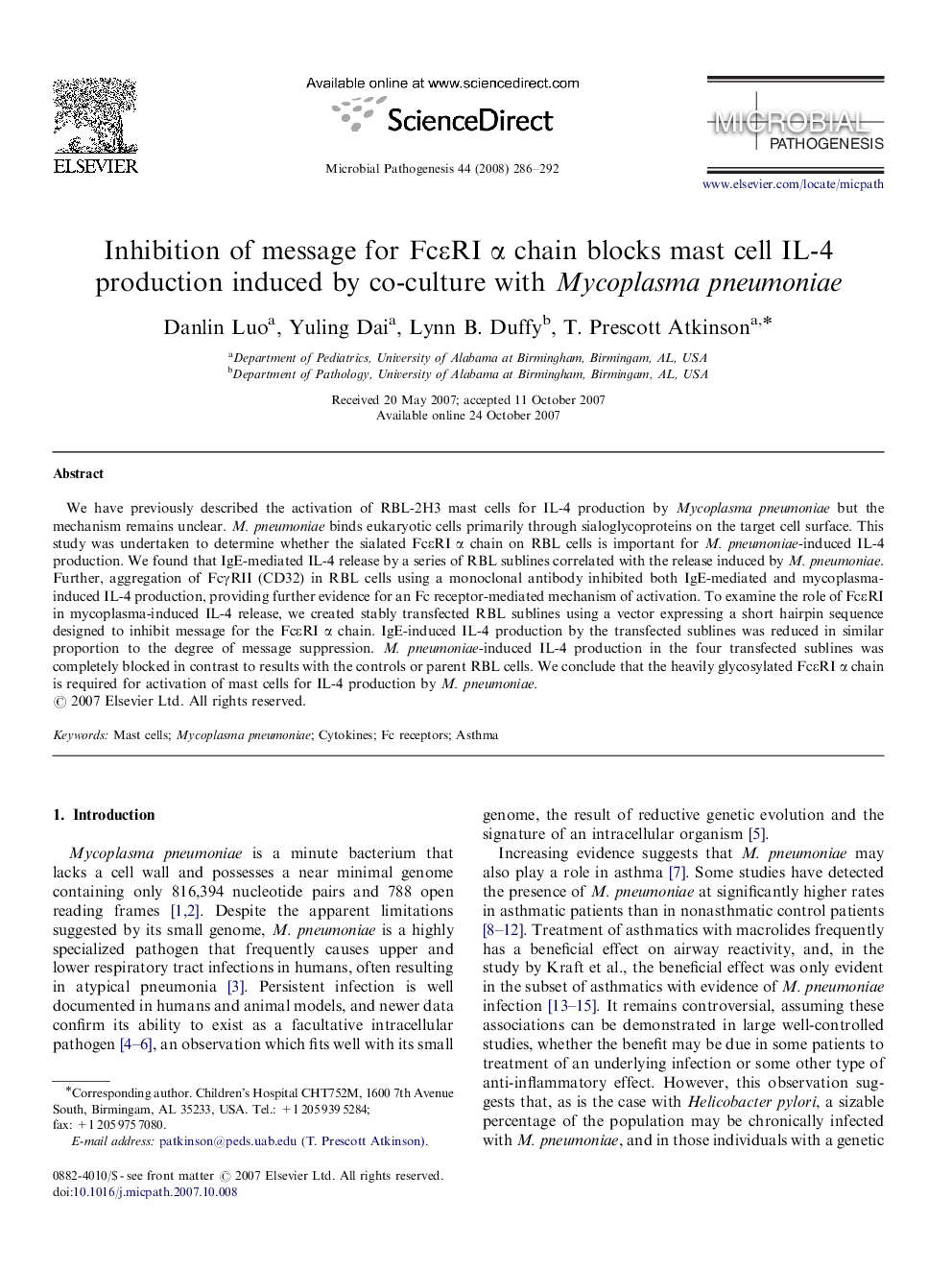| Article ID | Journal | Published Year | Pages | File Type |
|---|---|---|---|---|
| 3417122 | Microbial Pathogenesis | 2008 | 7 Pages |
We have previously described the activation of RBL-2H3 mast cells for IL-4 production by Mycoplasma pneumoniae but the mechanism remains unclear. M. pneumoniae binds eukaryotic cells primarily through sialoglycoproteins on the target cell surface. This study was undertaken to determine whether the sialated FcεRI α chain on RBL cells is important for M. pneumoniae-induced IL-4 production. We found that IgE-mediated IL-4 release by a series of RBL sublines correlated with the release induced by M. pneumoniae. Further, aggregation of FcγRII (CD32) in RBL cells using a monoclonal antibody inhibited both IgE-mediated and mycoplasma-induced IL-4 production, providing further evidence for an Fc receptor-mediated mechanism of activation. To examine the role of FcεRI in mycoplasma-induced IL-4 release, we created stably transfected RBL sublines using a vector expressing a short hairpin sequence designed to inhibit message for the FcεRI α chain. IgE-induced IL-4 production by the transfected sublines was reduced in similar proportion to the degree of message suppression. M. pneumoniae-induced IL-4 production in the four transfected sublines was completely blocked in contrast to results with the controls or parent RBL cells. We conclude that the heavily glycosylated FcεRI α chain is required for activation of mast cells for IL-4 production by M. pneumoniae.
